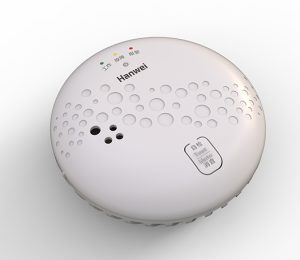Smoke alarms are devices designed to detect smoke and emit a loud warning signal, typically a loud beeping sound, to alert occupants of a building to the presence of a potential fire. These devices are crucial for fire safety in homes, offices, and public buildings.
Here’s a brief overview of how smoke alarms work:
1. Detection Technology: There are different types of smoke detectors, but the two main technologies used are ionization and photoelectric.
– Ionization Alarms: These detectors use a small amount of radioactive material to ionize the air within the detector. When smoke enters the chamber, it disrupts the flow of ions, triggering the alarm.
– Photoelectric Alarms: These detectors use a light source (usually an LED) and a sensor. When smoke particles enter the chamber, they scatter the light, which triggers the alarm.
2. Installation: Smoke alarms are typically installed on ceilings or high on walls since smoke rises. It’s recommended to have alarms on each floor of a building, including inside and outside sleeping areas.
3. Power Sources: Smoke alarms can be powered by batteries, hardwired into the building’s electrical system, or a combination of both. Battery-operated alarms require regular checks and battery replacements to ensure they remain functional.
4. Maintenance: Regular maintenance is essential. Test smoke alarms monthly, replace batteries as needed (usually once a year), and replace the entire alarm every 10 years or according to the manufacturer’s recommendations.
5. Interconnected Alarms: In some systems, multiple smoke alarms are interconnected, so when one detects smoke, all alarms in the network will sound. This is particularly useful for larger buildings or homes with multiple levels.
6. Smart Features: Modern smoke alarms may have smart capabilities, sending alerts to smartphones or integrating with smart home systems for remote monitoring and control.
7. Regulations and Standards: Different regions might have specific regulations regarding the installation and maintenance of smoke alarms. For example, some places require certain types of alarms or specific placements in new buildings or renovations.
Smoke alarms play a vital role in early fire detection, providing occupants with crucial time to evacuate and emergency services the opportunity to respond promptly. Regular maintenance and adherence to safety guidelines are essential to ensure their effectiveness.


Please contact us for free quotation by form below. We promise the quickest response within 24 hours: